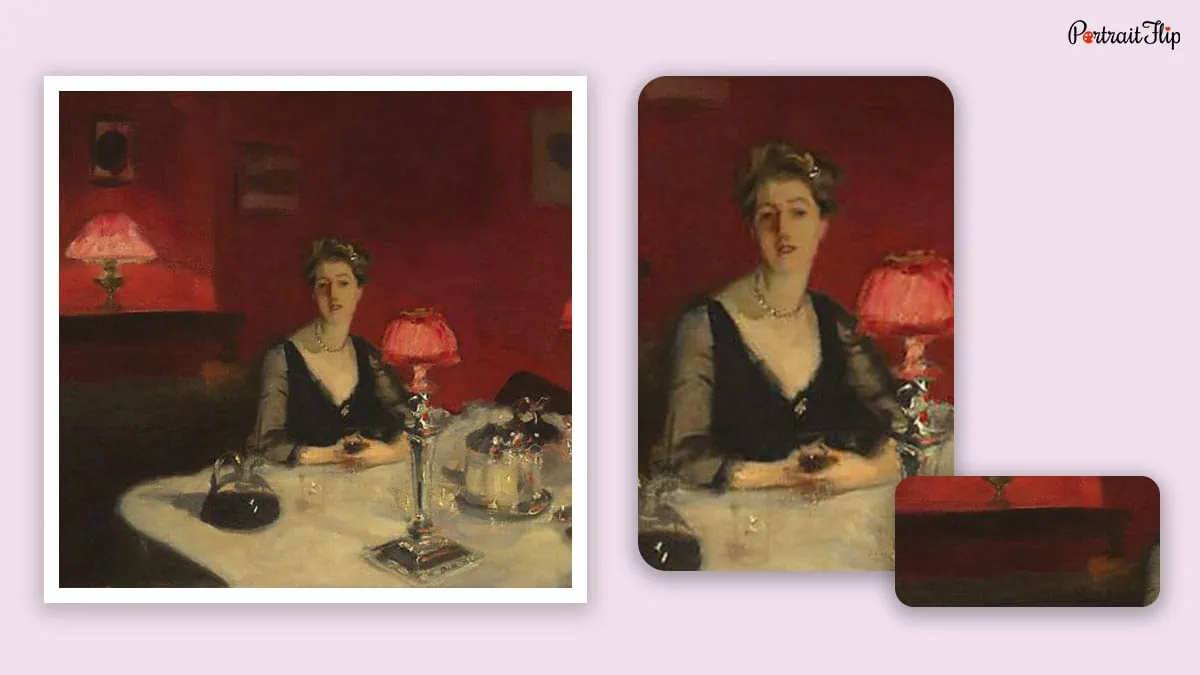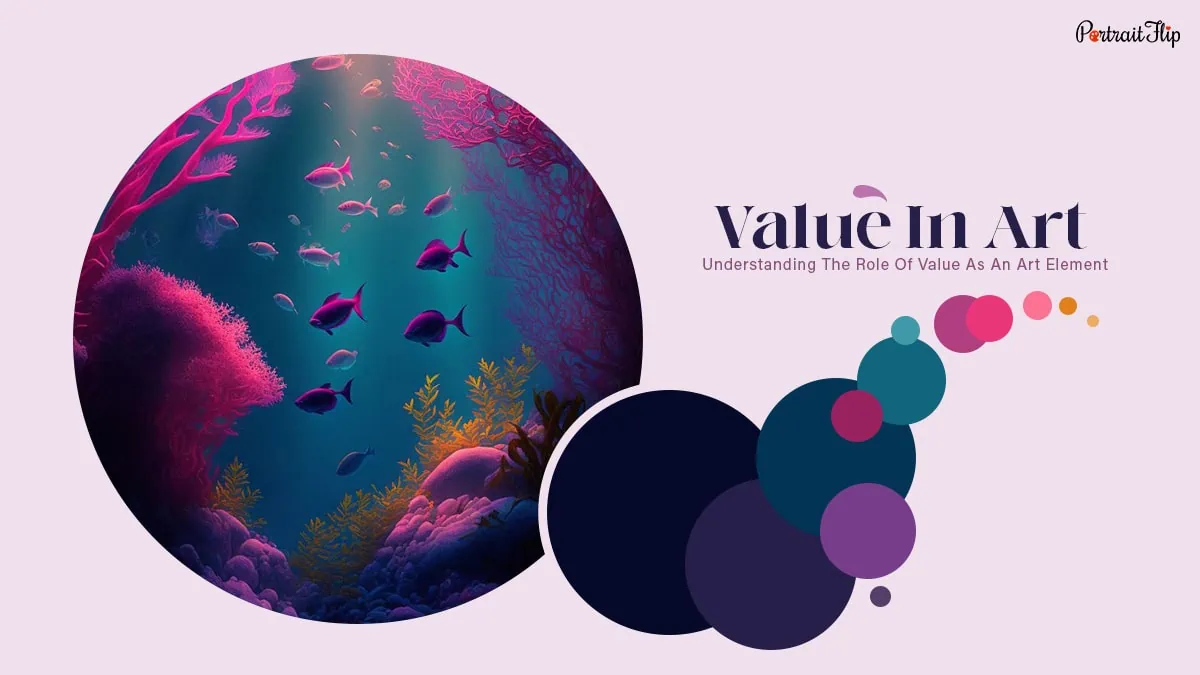Whether you’re planning to compose art or curious to know why some artworks are made with different color combinations, let me tell you you’re on the right page, as we’re here to discuss the role and importance of value in art.
As we all know, there are seven art elements of art—value having the most significant connection with color.
Value as an element determines the tone of the composition. A slight change in value can influence the look and feel of your composition.
From Renaissance to modern art, value played a significant role in setting the overall expression of art.
Without further ado, let’s jump straight into the topic and see how value makes a piece of art appealing, harmonious, and striking, and how it was used in so many of the world’s renowned artworks!
Table of contents
The Role of Value in Art
The first thing we notice in art is the subject but the working of light and shadow plays a huge role too.
Colors do influence the way we perceive art, but it is actually the value that alters our views.
We’re going to discuss the correlation between value and color in the next section, but let’s know the role of the value element in art.
Value as an art element:
- Creates harmony in composition
- Adds depth and meaning and sets the tone
- Creates illusion of depth
- Accentuates the purity of art
Value is the lightness or darkness of the colors used in the composition.
The main role of value in art is to create multiple effects by increasing or decreasing the intensity/saturation of the colors.

Looking at the above image, you must’ve learned the impact the value element has created.
But let’s learn in-depth about the relationship between colors and value.
(Also Read: Rhythm in Art)
The Relationship Between Value and Color
There are a myriad of colors, specifically bifurcated by primary, secondary, and tertiary colors.
Each color represents different emotions and tones. It also creates several effects in art, from dull to vibrant, blurry to bold, and naturalistic to abstract.
For example, red represents love, anger, and passion, whereas yellow represents energy, happiness, and vitality, and other pigments represent different emotions and meanings.
However, these include saturation, which makes a particular color appear warmer or cooler.
Which is done when the color gray, white, or black gets mixed with it, which determines the color temperature.

Looking at the above painting “The Birth of Venus”, you can see how two different effects are created by the change in color saturation.
If an original composition gets mixed with white or black, it makes it appear either fainter or muted.
On the grayscale, white is on one end, black is on the other, and gray is at the center.
That means the high value of white is the lowest of black; similarly, the high value of black is the lowest of white.
Value is affected when a color has been mixed with white, which is called a “tint”, and black, which is called a “shade”.
The lightest, or whitest, on the grayscale is called the “high-key” color range, whereas the darkest, or black, is called the “low-key” color range.
Grays, on the scale, which are at the center, are called “mid-key” or “mid-range”.
Suggested Read: Paintings by Botticelli
Famous Examples of Value in Art
We can understand how value functions in art with our own compositions, but it will be more convenient and understandable if we take some of Claude Monet’s paintings into account.
Value in art is how we mix either white or black with existing colors.
Claude Monet did a fabulous job not only by creating some of the finest impressionist artworks but also by helping art historians and aesthetes like us learn the importance of value in paintings.
He has drawn the same images under different weather conditions, light settings, and angles.
Take a look at these two images of Claude Monet’s: House of Parliament 1903 and House of Parliament 1904

The first image inclines toward low key ranges. The view is clear and prominent, but it gives off a mysterious feeling.
The second image is a bit unclear and full of mist. There is use of a high key value, showing the dawn.
Another great example could be “Dinner Table at Night ”, an artwork by John Singer Sargent.

The focal point of it is the woman sitting in the chair, holding a glass of wine, in the center of the composition.
The color of the table where the lamp is placed has been merged with the artwork’s tonality. The overall value is dim and a little bit unsaturated, creating a cozy and warm ambiance.
The next artwork is “The Kiss”, which provides a clear cut understanding of value in art composition.

Gustav Klimt’s art contains brighter colors, i.e., a high-key range. This made the embracing figure the focal point of the composition, which left thousands in awe when it first appeared in public.
These phenomenal and expensive artworks stunned the world with their compositions, backgrounds, and storylines. It also helped us understand different elements and principles of art.
Conclusion
The way you set the value of colors in a composition is the way you make your viewers interpret your art.
Every artist, at different points in time: cubism period, abstract art, or modern art—made use of different art elements and principles to add a wow factor to their compositions.
Speaking of the value element, it holds great importance in adding the punch factor to a composition. Without a doubt, it significantly impacts the success of an artwork.
Looking at Claude Monet’s painting above, you must have learned how the French painter produced different effects on a single image.
The secret?
He did it by changing the value of colors; he made it either darker or lighter, manipulating the light.
That means you can create various visual effects on a single image by just playing with the gradient scale.
You can even set the emphasis wherever you want and make art stand out from others!
Frequently Asked Questions
Color and value are two different elements of art. The value is closely related to color and is responsible for setting the tone of the composition.
The value is an art element that makes the composition either darker or lighter.
There are three different types of value in art: high-key, low-key, and mid-key.
Dinner Table at Night makes the best example to show the role of value in art.
Value, an art element, sets the tone, adds depth, and creates a focal point in art composition.





